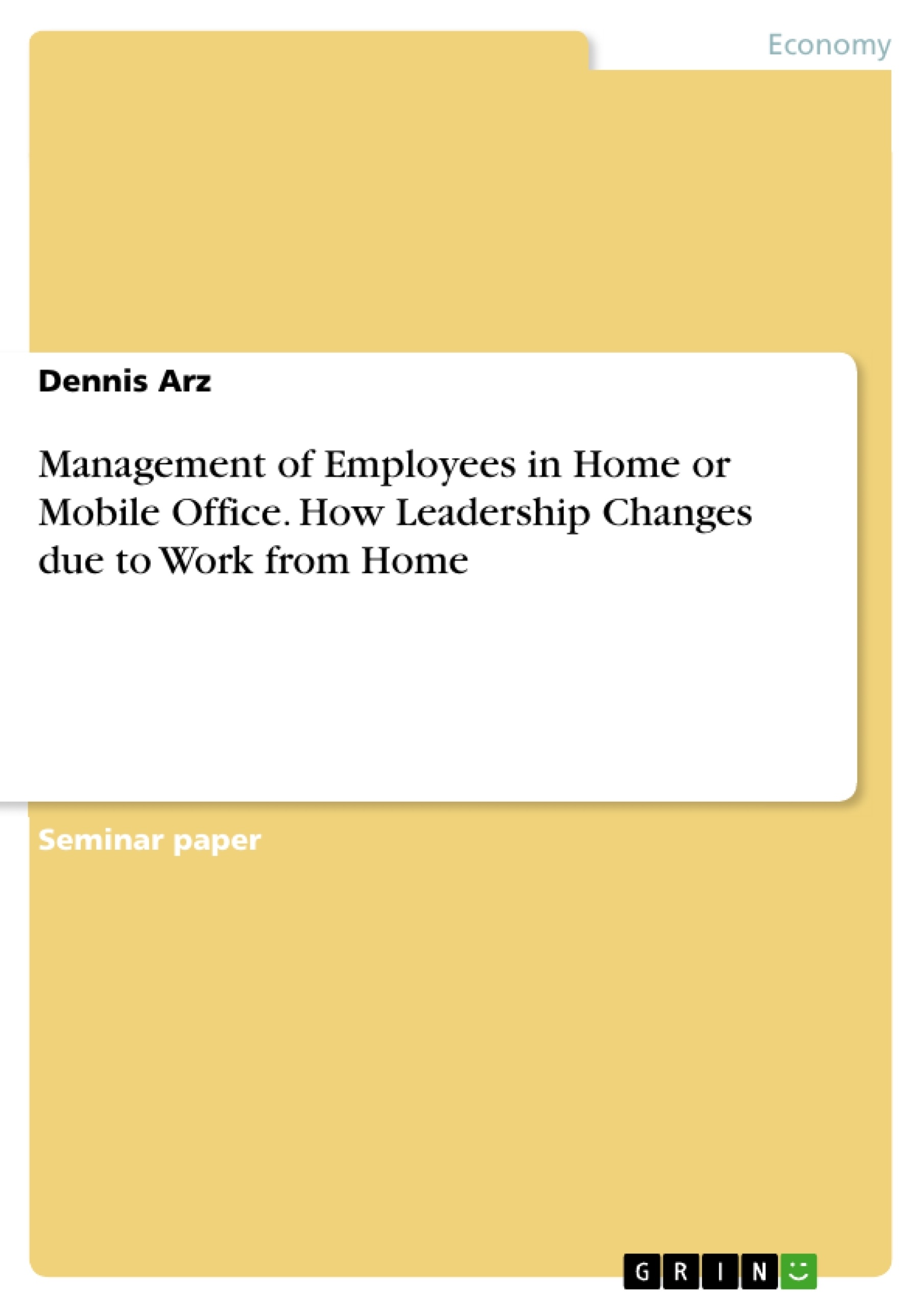Leadership is changing. Managers are faced with new challenges caused by globalization, digital transformation and a shortage of skilled workers due to demographic change. Working conditions, flexible work models like the implementation of home office or mobile office have become more important and the terms digital leadership and new leadership arise. Consequently, it is not only important that leadership changes for the company to be competitive in the markets, but also to position itself as a more competitive employer in the job market. From the point of view of leadership, due to the spatial separation through working remote, a tension arises between proximity and distance and a conflict between control and trust or between integration and laissez-faire.
Inhaltsverzeichnis (Table of Contents)
- 1 Introduction
- 1.1 Problem Description
- 1.2 Objectives and Structure
- 2 Definitions and Theoretical Background
- 2.1 Transformational Leadership
- 2.2 New Work
- 2.2.1 Home Office / Mobile Office
- 2.2.2 New Leadership and Fields of Action
- 2.2.2.1 Communication and Relationship
- 2.2.2.2 Trust and Autonomy
- 2.2.2.3 Development
- 2.2.2.4 Technology
- 2.2.2.5 Goal-Orientation
- 2.2.2.6 Motivation
- 2.2.3 Onboarding Process of New Employees
- 3 Case Study
- 3.1 Introduction
- 3.2 Objectives of the Case Study
- 3.3 Methodology
- 3.3.1 Feedback Culture
- 3.3.2 Communication Tools
- 3.3.3 Goal-Setting and Accountability
- 3.3.4 Team Building
- 4 Results and Discussion
Zielsetzung und Themenschwerpunkte (Objectives and Key Themes)
This paper explores the evolving landscape of leadership in the context of home office and mobile office work. It aims to identify how leadership styles are adapting to the challenges and opportunities presented by remote work environments. By examining the concept of transformational leadership, this paper explores how leaders can effectively manage and inspire employees in a geographically dispersed setting.
- Transformational Leadership in the Home Office/Mobile Office Context
- Adapting Leadership Styles for Remote Work Environments
- Key Challenges and Opportunities of Remote Work
- The Role of Communication and Technology in Remote Leadership
- Building Trust and Autonomy in Remote Teams
Zusammenfassung der Kapitel (Chapter Summaries)
The paper begins by outlining the problem of leadership in the changing landscape of work, driven by factors like globalization, digitalization, and the increasing prevalence of home office and mobile office models. It then defines and explains the theoretical framework of transformational leadership, presenting it as a key approach to managing employees in remote settings.
The paper further explores the concept of "new work" and its sub-dimension of "new leadership." It delves into the key fields of action for leaders in distance, including communication, trust, development, technology, goal-orientation, and motivation.
The paper goes on to describe the onboarding process of new employees in a remote work context. It then presents a case study examining the practical implementation of leadership in distance, focusing on feedback culture, communication tools, goal-setting, and team building.
Schlüsselwörter (Keywords)
This paper focuses on key concepts such as transformational leadership, new work, home office, mobile office, remote leadership, digital leadership, communication, trust, autonomy, development, technology, goal-orientation, motivation, onboarding, feedback culture, communication tools, goal-setting, and team building.
- Arbeit zitieren
- Dennis Arz (Autor:in), 2023, Management of Employees in Home or Mobile Office. How Leadership Changes due to Work from Home, München, GRIN Verlag, https://www.grin.com/document/1379128



